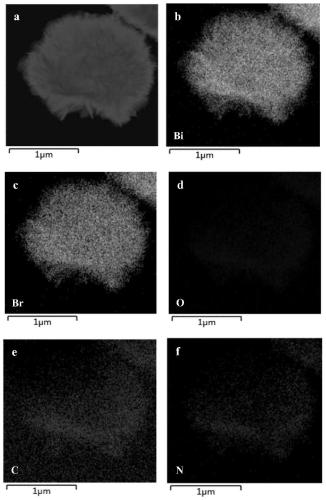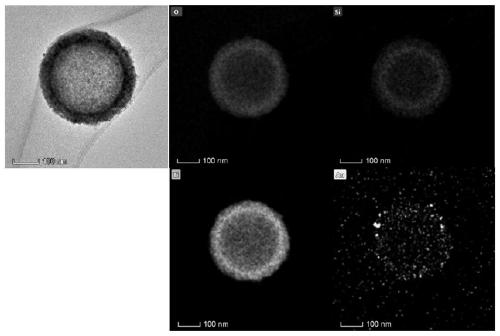Photo-enzyme integrated nano-catalyst as well as preparation and application thereof
A nano-catalyst and photocatalyst technology, applied in the direction of physical/chemical process catalysts, organic compound/hydride/coordination complex catalysts, chemical instruments and methods, etc., can solve the problems of lack of treatment methods, secondary pollution, and serious human health problems Risk and other issues, to achieve the effect of avoiding secondary pollution, improving degradation ability, and good treatment effect
- Summary
- Abstract
- Description
- Claims
- Application Information
AI Technical Summary
Problems solved by technology
Method used
Image
Examples
example 1
[0074] In this example, the semiconductor visible light photocatalyst uses BiOBr, and the organophosphorus hydrolase is a commercially available enzyme, and specifically adopts the organic phosphorus degrading enzyme biochemical decontaminant produced by Tianjin Zhangda Science and Technology Development Co., Ltd., model PG -OPH-D1, the main component is organophosphate degrading enzyme.
[0075] The specific preparation process of BiOBr is as follows:
[0076] 2mmol Bi(NO 3 ) 3 ·5H 2 O was dissolved in 70 mL of ethylene glycol, and 2 mmol of C16MIMBr was added to the above solution with stirring to obtain a mixture. Then, the mixture was sonicated and stirred for 30 minutes until all substances were uniformly dispersed, then the resulting mixture was transferred to a Teflon-lined stainless steel autoclave, and kept at 160 °C for 12 hours in an electric blast drying oven for reaction. After the reaction was completed, the reaction solution was cooled to room temperature, c...
example 2
[0079] In this example, the semiconductor visible light photocatalyst adopts titanium dioxide with controlled morphology, specifically Au-SiO with a hollow spherical shell structure. 2 @TiO 2 . The titanium dioxide after the morphology control has a hollow structure and a large specific surface area, which can provide a large number of active sites for the attachment of enzymes. At the same time, the gold loaded on the spherical shell can also realize the adjustment of the band gap width of titanium dioxide. So that it can have catalytic activity under visible light.
[0080] The organophosphate hydrolase in this example is the same as in Example 1.
[0081] The preparation process of the titanium dioxide controlled by the morphology of this example is as follows:
[0082] First, 0.15g of SiO 2Disperse in 200mL of ethanol, mix with 900μL of 28wt% concentrated ammonia solution in ultrasonic for 15min, then add 2mL of n-butyl titanate, stir at 45°C for 24h to obtain amorphou...
PUM
 Login to View More
Login to View More Abstract
Description
Claims
Application Information
 Login to View More
Login to View More - R&D
- Intellectual Property
- Life Sciences
- Materials
- Tech Scout
- Unparalleled Data Quality
- Higher Quality Content
- 60% Fewer Hallucinations
Browse by: Latest US Patents, China's latest patents, Technical Efficacy Thesaurus, Application Domain, Technology Topic, Popular Technical Reports.
© 2025 PatSnap. All rights reserved.Legal|Privacy policy|Modern Slavery Act Transparency Statement|Sitemap|About US| Contact US: help@patsnap.com



